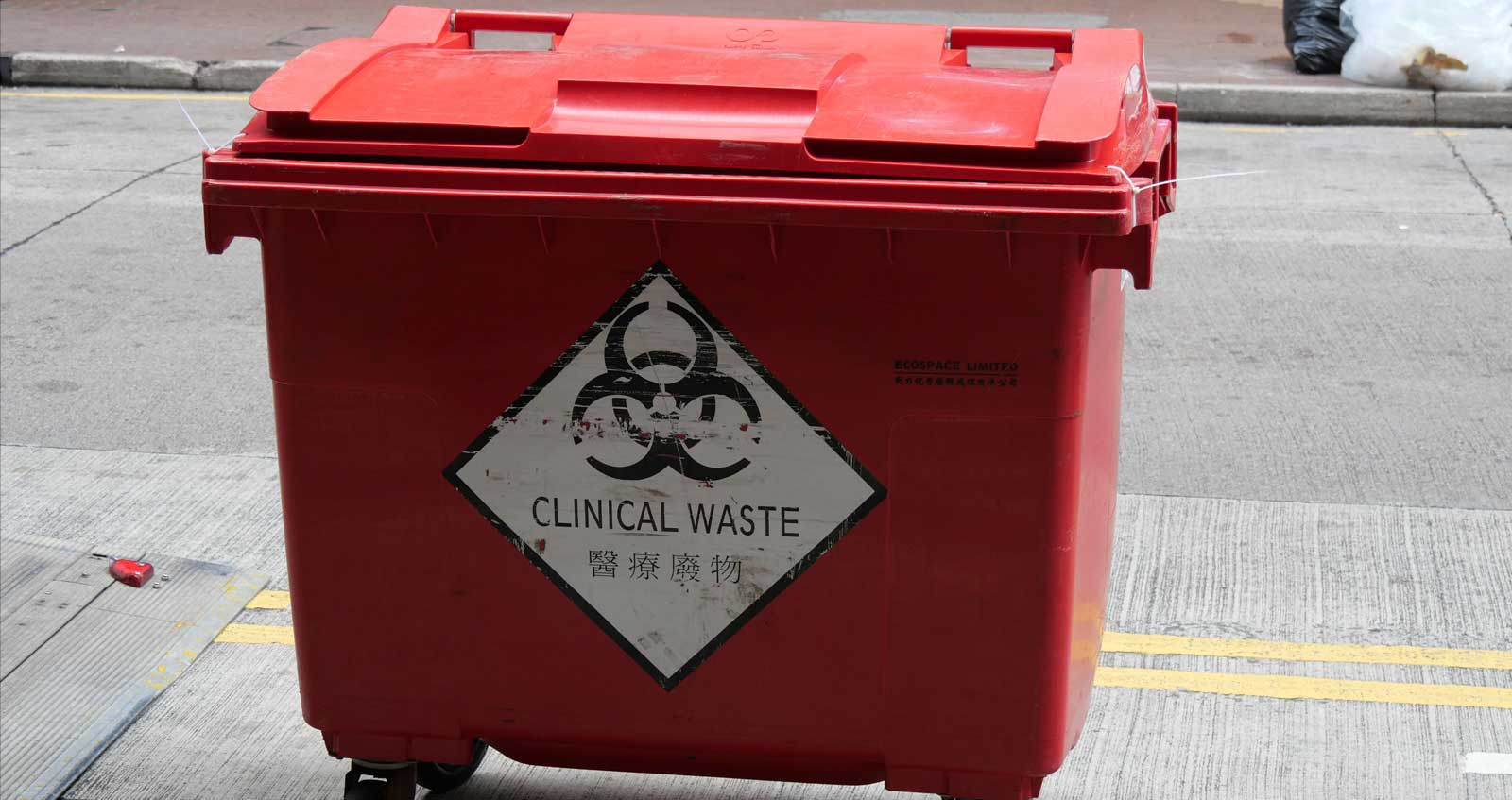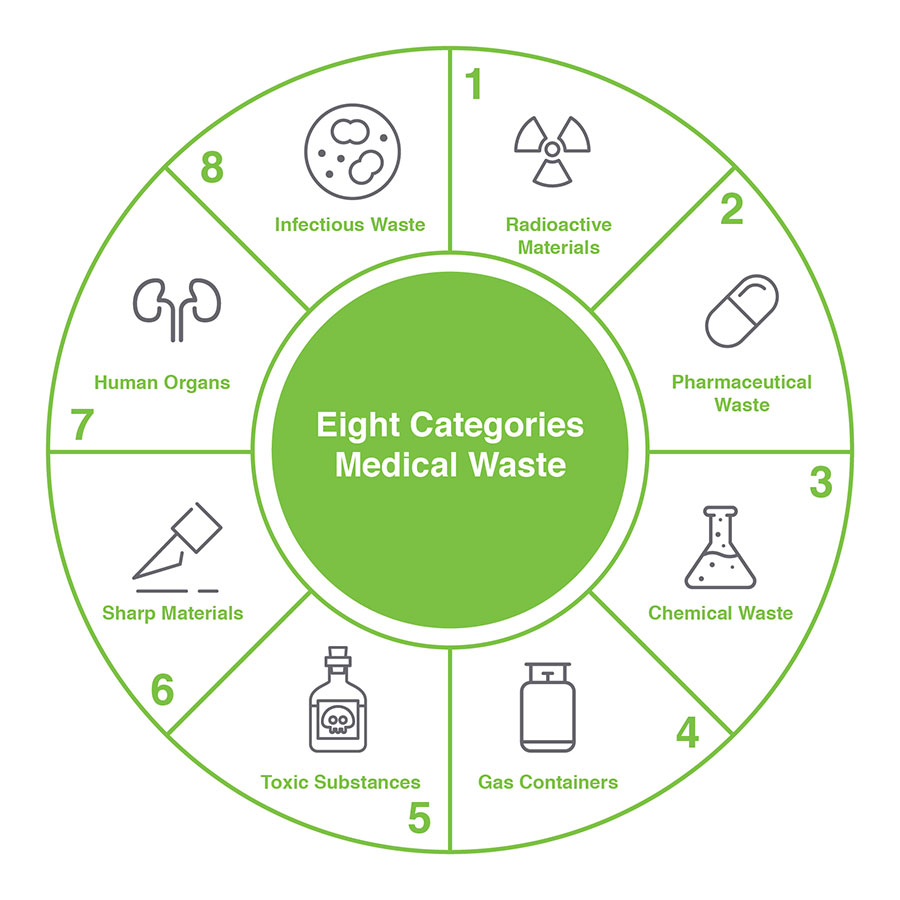Beyond Clean-up: Ensuring Security with Expert Medical Waste Removal
Minimize Prices and Optimize Safety: Effective Medical Waste Disposal Approaches
Effective clinical waste disposal strategies are critical for healthcare facilities to decrease expenses and take full advantage of safety. With the growing problem for ecological sustainability and the increasing variety of regulations surrounding waste monitoring, it is crucial for health care companies to embrace compliant and efficient methods. By applying correct partition and classification, effective packaging and labeling, risk-free transportation and handling, efficient therapy and disposal approaches, and conformity with regulatory standards, healthcare facilities can guarantee the accountable and secure monitoring of clinical waste. In this discussion, we will check out each of these methods in information, supplying insights and functional tips for medical care professionals to optimize their waste disposal processes.

Correct Partition and Categorization
Appropriate partition and classification are essential parts of effective medical waste disposal techniques, making sure the safety and security of medical care workers, the public, and the setting - medical waste removal. medical waste disposal services with WasteX. By dividing different kinds of clinical waste at the point of generation, health care centers can lessen the danger of cross-contamination and possible injury to individuals and ecological communities
Among the key aspects in appropriate segregation is the identification and category of clinical waste. This includes classifying waste into different groups, such as infectious, hazardous, radioactive, or pharmaceutical waste. Each classification needs details handling, storage space, and disposal approaches to stop any damaging results on human health and the setting.
Furthermore, correct partition additionally consists of making use of color-coded containers and tags to clearly determine and distinguish the numerous sorts of clinical waste. This assists healthcare workers and waste administration workers to quickly recognize and handle the waste suitably. As an example, red containers may be utilized for transmittable waste, while yellow containers might be marked for unsafe waste.
Along with partition, appropriate classification likewise entails the proper product packaging and control of clinical waste. This makes sure that waste is securely kept and transferred without posing any kind of dangers to people or the setting. Using leak-proof and puncture-resistant containers, along with effectively securing and identifying them, assists to avoid any unintended exposure or launch of dangerous compounds.
Reliable Packaging and Classifying
Reliable packaging and labeling play an important function in ensuring the secure and efficient disposal of medical waste. Correct product packaging is necessary to prevent leakage, damage, or splilling throughout transportation and handling. It assists to reduce the risk of contamination and protects healthcare employees, waste administration workers, and the atmosphere from prospective hazards.
Medical waste must be packaged in sturdy and watertight containers that are resistant to pierce and damage. These containers should be correctly secured to stop any leakage. Additionally, the product packaging should have the ability to withstand the conditions of transport, including temperature level variations and misuse.
Labeling is similarly vital as it gives critical info concerning the contents of the waste and any kind of prospective dangers associated with it. The tags must include the name of the medical care facility, the kind of waste, and any kind of special handling guidelines. Clear and standardized labeling ensures that waste administration employees can easily determine and take care of the waste suitably.
Efficient packaging and labeling likewise aid in the appropriate partition and classification of medical waste. Clear labeling enables for simple identification of different waste streams, such as transmittable waste, sharps, or pharmaceutical waste. This helps in enhancing the disposal procedure and guaranteeing that the waste is treated or thrown away in conformity with regulative standards.
Safe Transport and Handling
Making sure the risk-free transport and handling of clinical waste is of utmost importance in order to avoid any prospective health and wellness and environmental threats. Clinical waste, such as sharps, polluted products, and pharmaceutical waste, should be appropriately packaged and handled to lessen the risk of exposure to damaging substances and pathogens.
Moving clinical waste calls for compliance with strict guidelines and guidelines established by local authorities and ecological companies. These policies aim to shield the health and wellness and safety and security of workers included in waste monitoring and avoid the release of harmful materials into the environment.
To make certain safe transport, clinical waste needs to be positioned in watertight and puncture-resistant containers that are correctly secured and labeled. In addition, it is critical to utilize customized vehicles outfitted with ideal security features to carry medical waste. medical waste disposal services with WasteX.
Dealing with medical waste likewise calls for correct training and adherence to security procedures. Employees associated with the handling of medical waste should use proper personal protective tools (PPE) such as masks, handwear covers, and dress to decrease the risk of exposure. They must likewise comply with rigorous health techniques to prevent the spread of infections and guarantee the risk-free disposal of waste.
Reliable Therapy and Disposal Approaches
Implementing appropriate treatment and disposal methods is important in handling clinical waste successfully and decreasing possible wellness and ecological threats. Clinical waste, that includes sharps, contagious products, chemicals, and pharmaceuticals, go to this site can position considerable risks if not handled and taken care of effectively. There are numerous therapy and disposal techniques available that abide by regulatory standards and advertise risk-free practices.
One common technique is incineration, which includes melting the waste at high temperatures. Incineration is efficient in ruining microorganisms and lowering the quantity of waste, yet it can launch harmful pollutants into the air otherwise properly controlled. For that reason, it is necessary to use contemporary incinerators geared up with discharge control innovations.
An additional approach is autoclaving, which utilizes heavy steam and pressure to sanitize the waste. Autoclaving is effective in eliminating virus and minimizing the volume of waste, but it requires mindful surveillance and maintenance to guarantee proper performance. The decontaminated waste can after that be safely disposed of in a land fill.
Chemical therapy is one more option, which entails utilizing disinfectants or other chemicals to neutralize virus. This approach is frequently used for liquid waste, such as laboratory specimens. However, it is essential to utilize appropriate chemicals and adhere to appropriate treatments to make sure effective therapy and stop environmental contamination.

Conformity With Regulatory Guidelines
Following regulatory guidelines is crucial in making sure correct compliance with clinical waste disposal methods. These standards are established to shield public health and wellness, protect against environmental contamination, and preserve office safety. Compliance with governing guidelines is important for medical care facilities, as non-compliance can result in charges, penalties, and reputational damage.
Governing guidelines detail the correct handling, storage space, transport, and disposal of clinical waste. These standards additionally resolve the partition of various waste streams, such as sharps, transmittable waste, and pharmaceutical waste.
To click here for more info keep conformity, healthcare facilities should develop thorough waste monitoring programs that consist of team training, routine audits, and continuous tracking. It is vital to keep up-to-date with any changes or updates to governing standards, as methods may evolve over time. By remaining notified and carrying out appropriate protocols, medical care centers can minimize the potential for regulatory offenses and secure the health and wellness of their team, individuals, and the surrounding community.
Verdict
Finally, executing effective clinical waste disposal strategies is critical for lessening costs and making the most of safety. Correct segregation and classification, effective product packaging and labeling, risk-free transportation and handling, and efficient treatment and disposal techniques are important actions to guarantee conformity with regulatory standards. medical waste removal services. By sticking to these techniques, medical care facilities can shield the environment and public wellness while also lowering financial problems connected with medical waste monitoring
By implementing appropriate partition and categorization, effective product packaging and labeling, secure transport and handling, reliable treatment and disposal approaches, and conformity with regulatory standards, medical care facilities can guarantee the accountable and risk-free administration of medical waste. Red containers might be made use of for contagious waste, while yellow containers might be designated for unsafe waste.
Standardized and clear labeling makes sure that waste monitoring employees can easily identify and deal with the waste properly. (medical waste disposal services with WasteX)
Clear labeling enables for easy resource identification of various waste streams, such as transmittable waste, sharps, or pharmaceutical waste. These guidelines also address the partition of various waste streams, such as sharps, contagious waste, and pharmaceutical waste.